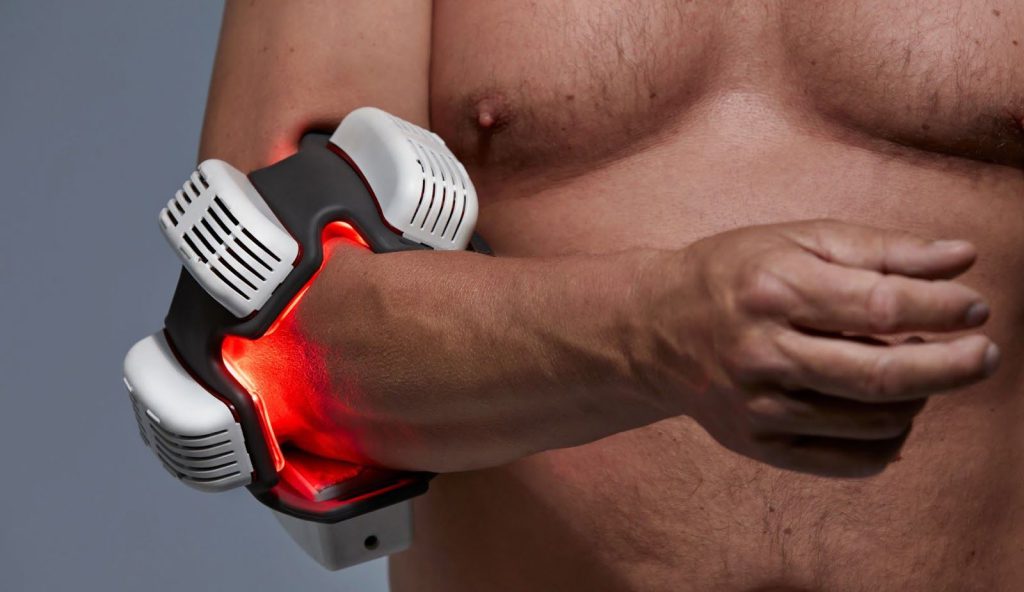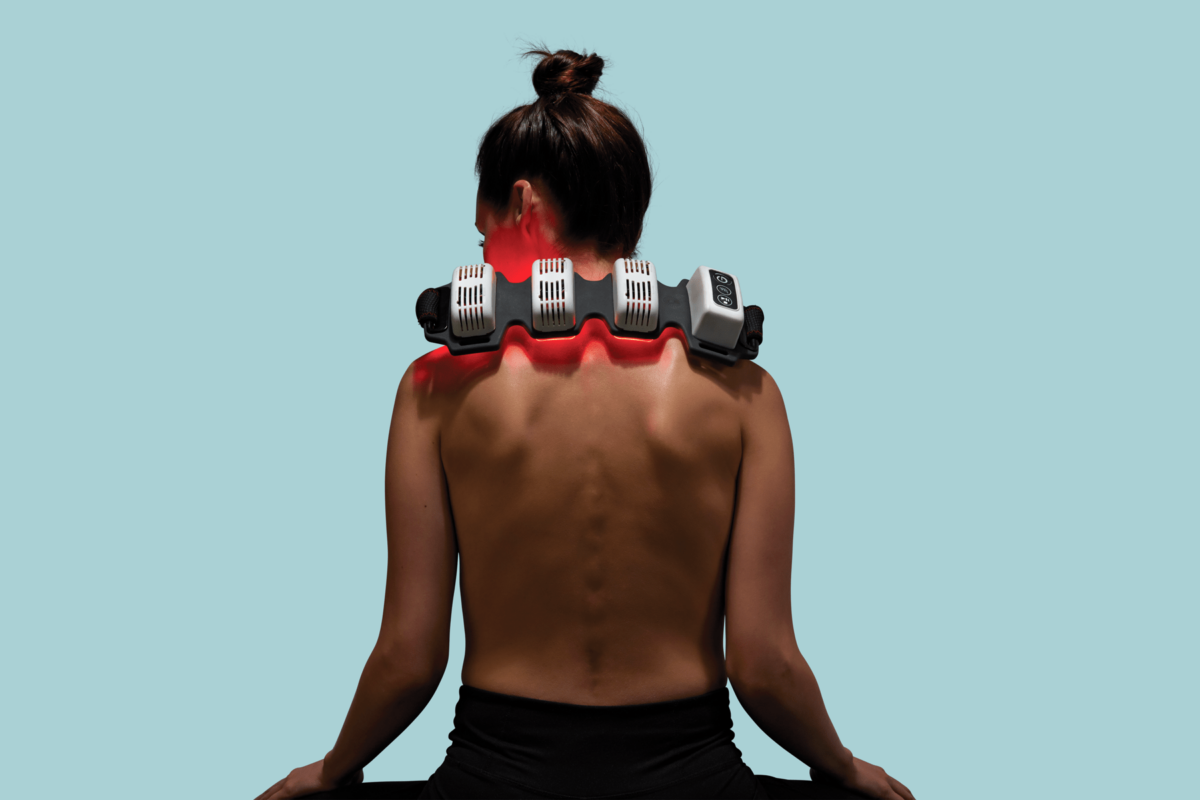Your cart is currently empty!
What Is the Difference Between Red Light Therapy and Infrared Sauna?
“Red light therapy… you mean, like infrared sauna?”
Well, no. Red light therapy is not the same as infrared sauna.
If this question springs to your mind when somebody mentions red light therapy, you are not the only one. Red light therapy vs infrared sauna is a common source of confusion.
There are several terms that people often mix up: red light vs infrared light, near-infrared light, infrared sauna. It goes even further into far infrared and near infrared sauna distinctions.
All of these therapies have beneficial effects on your body, but you should do your research before picking the best red light therapy device.
So, let’s clear up the confusion and start by explaining the differences.
Red Light vs Near Infrared Sauna vs Infrared Sauna

Red light therapy is a form of photobiomodulation therapy that uses light in the red spectrum. More precisely, the wavelength falls between 600-650 nanometers (nm). This red light penetrates up to 5mm below the surface of the skin. It boosts collagen production which makes it an excellent healing option for skin conditions, boosting metabolism.
Near-infra red light has wavelengths ranging from 750-1100nm. It can penetrate as deep as 10cm. Due to its great reach, this spectrum boosts mitochondrial function and promotes healthy blood flow. Red light therapy devices should combine both red and near-infrared light for best results, as their effect is synergistic.
Infrared light ranges from 700 nm to 1 mm. This range is divided into near-infrared, mid-infrared and far-infrared wavelengths. The difference between near vs far infared is in the wavelength and heat. Infrared saunas usually use far infrared because this wavelength also emits heat. So, infrared saunas heal the body in a completely different way using heat – thermal energy – and not light – photonic energy.
All of these therapies have their benefits and you should make an informed decision about which of them you want to use and why.
It is important to note that there are no known side effects of red light therapy, while infrared therapies have some practical downsides. That’s one of the reasons why you should know the difference between near and far infrared light.
To make this a bit clearer, here are some shot answers to the most frequently asked questions about different types of light therapy and saunas in this range:
Is there a red light therapy sauna?
If you take a look at the table above, you’ll see that red light therapy vs far infrared means the difference between healing with light or with heat. With that in mind, you can’t have a red light therapy sauna because red light doesn’t emit heat.
Sometimes, red light is used as an umbrella term for all ranges covering everything from red to far infrared. That is why, sometimes, you’ll find people not making a distinction between red vs infrared.
Can you find a infrared sauna with red light therapy?
Infrared saunas can have lights that emit beneficial sauna red light. This is in effort to give double benefits to their clients. While this is a good idea, it doesn’t always work, because the effects of red light therapy weaken when you are too far away from the light source. Since sauna red light sources are near the heaters, you are probably too far away to experience its benefits.
What’s the difference between near and far infrared sauna?
The difference between near vs far infrared sauna is that the near infrared sauna doesn’t emit heat. Near infrared vs far infrared are different in a way that near infrared sauna is a red light therapy wall panel, while the far infrared needs to be a closed-door heated room.
What is the difference between infrared vs regular sauna?
Infrared sauna usually refers to far infrared sauna. Regular sauna creates a hot environment in the room, usually supplemented by hot stones and steam. A traditional Finnish sauna is a wooden cubicle with high temperature and humidity.
Infrared sauna can be wooden or plastic and it consists of (far) infrared heaters that emit heat. There is no humidity unless it is added on purpose. The temperature is lower than in the regular sauna and it is achieved by the radiation from the heaters.
What Are the Advantages of Red Light Therapy vs Infrared Sauna?
Infrared saunas and lamps producing heat to achieve detoxification of the organism, relaxation and improved cardiovascular health. These effects are all highly beneficial.
Still, there are some downsides to infrared sauna vs red light therapy when it comes to your daily routine. Here is why some people choose red light therapy over infrared saunas.
1. RLT Is Cold – Not All People Can Stand the Heat
There are people who love basking in the sun. Then there are those who loathe the sun and heat and would pick a winter holiday over the beach any day. There is a third group of people that need to stay away from the heat due to medical reasons, rather than personal choice.
You should avoid using an infrared sauna before consulting a doctor if:
- You are pregnant
- You have very high or very low blood pressure
- You are under the influence of alcohol
- You have blood circulation issues
- You have a heart condition
- You have hemophilia
- You do not tolerate extreme temperatures well
- You have fever
- You have diabetes
- You have suffered a stroke in the past
- You have multiple sclerosis
2. Infrared Therapy Can Cause Dehydration
When there’s heat, there’s the danger of dehydration. Dehydration is a more serious issue than most people think. After all, our body consists mainly of water and if the levels of water are too low, many problems are triggered from the cellular level to the whole body.
Severe dehydration can cause muscle cramps, nausea, vomiting, weakness, heart palpitations and more side effects. People with kidney disease cannot tolerate even the slightest form of dehydration.
You’re not likely to reach a state of severe dehydration in infrared saunas. Especially if you follow instructions and have a glass of water or two, now and then. Still, this takes away from a truly relaxing experience.
3. Red Light Therapy Allows You to Target Certain Areas

A red light therapy device doesn’t have to be huge. It can be portable and flexible. This means that it can reach certain areas of the body without you having to expose your entire body.
For example, you can wrap your FlexBEAM around your elbow to treat an injury that you want to heal fast. You will most likely experience instant pain relief.
Given that most infrared saunas are big, it is highly unlikely that you can achieve targeted results with it.
4. You Can Lose More Than You Gain with Infrared Sauna
There is a logical question that comes to mind when it comes to infrared saunas. If it emits red light AND it emits heat, doesn’t it combine the best of both worlds?
It doesn’t. Due to the high heat, it is impossible to get close enough to the source of the heat/infrared radiation for it to have a photonic effect.
On the other hand, the release of toxins, soothing and relaxing effects, and the boost of immunity – you can achieve all that with red light therapy, even without the heat element.
5. Infrared Therapy Can Be Time-Consuming
How long is an infrared sauna session? You need to go to a sauna, take the time to prepare, and spend around 30 minutes inside. You will most likely need a shower after the session as well.
If you use a red light therapy device, all you need to do is remove enough clothes so you can put it directly on your skin, and each session is 10 minutes. During those 10 minutes, you can continue working, reading, or doing what you want.
6. Red Light Therapy Cannot Cause Thermal Injury
In some rare cases, infrared saunas can cause thermal injury. This is best explained in words of Thomas E. Johnson, Associate Professor, Colorado State University:
The ICNIRP statement on the biological effects of infrared radiation (IR) indicates that thermal injury (heat) is the dominant risk. Thermal (heat) injuries will depend on the wavelength (or color, if it could be seen) of the IR lights. IR light may cause thermal injury even if you do not feel pain for certain types of IR light exposure.
Hyperpigmentation, scaling, and telangiectasias (erythema ab igne) may occur from repeated IR exposures of elevated temperatures, even if the skin is not burned. Skin cancer is not expected from exposure to IR. However, increased skin temperature can reduce DNA repair efficiency, and promote skin cancer that is initiated by other agents. Skin thickness may also increase due to repeated IR exposures..
7. Red Light Therapy Devices Don’t Have to Be Expensive
There are several options for you to enjoy the benefits of infrared saunas. One includes paying for regular infrared sauna sessions and the other one is to buy your own device. Both of these options are expensive.
Red light therapy is very effective even when performed with portable devices. You can have a red light therapy device at home for just a fraction of the cost of an infrared sauna
Regardless of which type of therapy you choose, your body will thank you. However, in the modern fast-paced world, the question of convenience is also important. Setting health goals that cost more time and money than you can realistically afford ends up being more costly.
Luckily today, we live in a time when red light therapy has become an affordable and convenient solution that brings so much to the table without compromising comfort.
Learn more about how red light therapy can improve your life.
